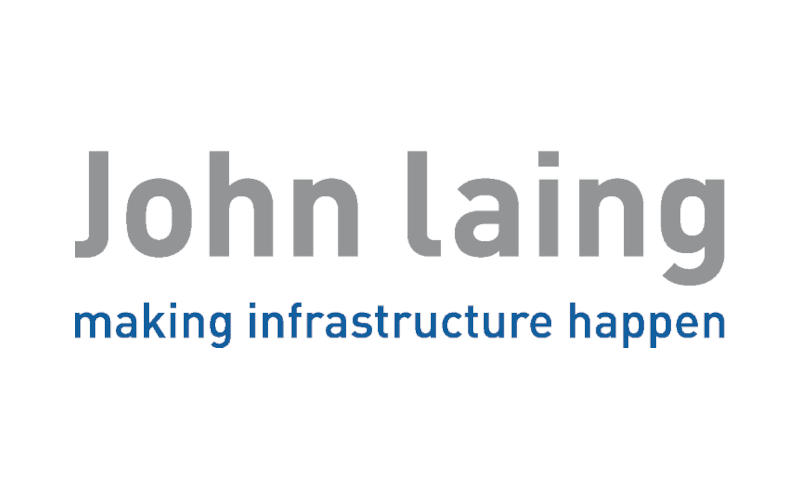
Social P3s in the US infrastructure space comprise a blend of public-purpose facilities alongside commercial and residential real estate components, but defining which projects are most suitable for infrastructure investors can be confusing as the project offering expands. Infralogic’s Eugene Gilligan and Jonathan Carmody investigate which social infrastructure P3 projects can be better suited to infrastructure versus real estate investors.
As the US P3 market continues to mature and generate more distinct social infrastructure public-private partnership (P3) projects, government agencies are combining real estate elements and public-use purposes in projects that add additional levels of complexity for infrastructure and real estate investors alike.
With 74 greenfield social infrastructure transactions worth USD 11.39bn closing in the US over the past 10 years, according to Infralogic data, the social infra sector is building importance.
Combining where we live and how we move by locating various residential, commercial properties around transportation hubs is a popular idea in civic planning, shortening the time we spend away from our place of residence and taking advantage of the closer proximity of public services.
“Infrastructure projects can’t do just one thing anymore,” said Orion Fulton, Americas sustainable advisory leader at Arup, who noted the logical combination of “core” infrastructure and real estate into a single procurement. “They are so expensive that they have to address multiple community needs beyond core infrastructure, such as social infrastructure and housing.”
Arup served as the lead technical advisor and financial advisor to the city on the Long Beach Civic Center P3, which reached financial close in 2016, and proved somewhat of a pathfinder for social infrastructure projects that include significant real estate components.
The DBFOM project, won by a Plenary and Edgemoor Infrastructure & Real Estate consortium, involved the DBFOM of a City Hall and Main Library across a city block in downtown Long Beach, the revitalization of Lincoln Park, and a new headquarters for the Port of Long Beach. In addition to these public service facilities the project also included private real estate development on excess city-owned land to be delivered available for use and within requirements.
Arup is also advising Burbank, California, on its proposed civic center project. The city is also looking to build a new library and city offices, and those projects are anticipated to include real estate components, such as new housing and commercial developments.
“The city spoke to many infra developers and housing contractors,” Fulton said. “Who could cross over and do both? Who is best placed to provide housing and ring fence the real estate assets to bring the best benefits?” Fulton asked.
While the US social infrastructure sector hit a peak of 13 deals worth USD 2bn closing in 2020, this year so far only one P3 has reached financial close – the 761-bed American Campus Communities' Berkeley University student housing P3. Meanwhile, Infralogic counted that, globally, only 1% of deals that closed in 1Q23 were social infrastructure projects. In 2022, globally, 4% of closed transactions or 144 deals, were social infrastructure P3s, according to Infralogic’s FY22 Rankings report.
Mixed-use development
Other recent projects, such as the San Francisco Potrero Bus Yard Expansion P3 and the Dorrance Street Transit Center P3, further illustrate how the blend of infrastructure and real estate components in P3s comes in a wide variety of formats.
Potrero will replace San Francisco’s existing two-story maintenance facility with a three-story bus maintenance and storage garage that includes electric battery-powered buses and a residential housing component. The latter part of the plans feature the development of approximately 500 rental housing units, a significant percentage of which will be “affordable housing.”
In October 2022, The San Francisco Municipal Transportation Agency announced it would enter into a pre-development agreement with a Plenary-led consortium for the project, a company that has participated in dozens of social infrastructure P3s across North America.
Another project now in procurement also includes potential for substantial real estate development: The Dorrance Street Transit Center P3 is planned to include a bus terminal, to be located in downtown Providence, Rhode Island, with the potential for additional transit-oriented, mixed-use developments to be constructed around the central component of the project – the transit center.
Monetizing public land
Monetizing not just the public services that infrastructure provides but also the empty or underused real estate available to municipalities is an attractive proposition for authorities looking to maximize their existing assets.
“Many cities and counties in the US may not have much money, but they may have a large amount of excess land,” said Alfonso Méndez-Lossada, head of financial advisory at Arup. “These governments are asking ‘how far can we get the value of the land to leverage it towards the delivery of public infrastructure?”’
Private sector companies with a clear mandate to return assets to their owners in prime condition and with well-regulated contracts have more incentive to maintain facilities to a higher standard than public sector authorities that might have less commitment to maintenance.
The major question to be asked in a hybrid project is “what is the balance between core infra and real estate,” Anthony Phillips, John Laing’s regional managing director for North America, told Infralogic. “We have to decide if these projects are ultimately in our mandate.”
Phillips cites the Philadelphia 30th Street Station P3, which a Plenary-led consortium won and financed in 2021, as combining a mix of infrastructure and real estate components that is attractive to infrastructure investors.
Many P3s with a significant real estate component have the same characteristics as more “traditional” P3s, according to Roderick Devlin, partner at Nixon Peabody. “Many feature a public party and asset, a private equity investment, and risk transfer to the private partner that is greater than that generally seen in a public procurement,” Devlin said.
Do social infrastructure assets generate revenue? Research buildings at educational facilities, where nobody is paying rent but the infrastructure proves an essential asset, are very distinct from student housing P3s, which have a clear revenue source and funds coming in to pay for the asset. Not all infrastructure investors want to be property managers.
Progressive procurement structures can be a good fit for P3s that include a large real estate component, Devlin said. “Public owners are not in the business of commercial real estate development but can recognize the potential of such development to help offset the cost of public projects.”
According to Devlin, a progressive P3 procurement “can help both sides cooperatively develop solutions that work for them both,” especially if the parties are able to successfully disaggregate the real estate and infrastructure components in the contracts.
Complementary frameworks
The increasing combination of mixed-use real estate and infrastructure components in P3 procurements comes at a time when there is some uncertainty surrounding the future of the US office market, due to the impact of the COVID-19 pandemic on remote and hybrid work systems.
“There are a lot of empty government buildings these days, people haven’t come back to the office,” said Bob Hunt, managing director of public institutions at JLL. “The commercial real estate sector is shrinking – there should be a reimagining of how we use those assets.”
At the same time, the public sector has become more educated about the social P3 infrastructure model, “and is doing better deals as a result,” Hunt said. He is seeing more affordable housing and green development elements in social P3s, “fueled by more access to public funds and grants.”
Investors like Tikehau Star America, Balfour Beatty and Plenary have a strong presence across closed projects to date, while American Campus Communities, Capstone Development Partners, Balfour Beatty Campus Solutions and Greystar Real Estate Partners are now familiar names in the social infra P3 space.
Hunt said that he rarely sees infrastructure investors and real estate investors compete as they have different expertise and investment profiles. However, regardless of the developer profile, there is a fundamental problem when the procuring authority initiates a development project without having a clear understanding of what they are trying to accomplish and how they’ll measure success. Prior to initiating the procurement, they should also be careful to evaluate the project’s risks and their desired risk transfer, he said.
In contract structures that bring public and private sector entities together to build something, and where there’s adequate risk sharing, the private sector is bringing expertise, capital, risk acceptance or resources that the public sector isn’t well-placed to take on. While city and county governments see benefits in combining the procurement of an infrastructure asset with real estate development, the federal government is also now giving these initiatives a push.
In October 2022, the US Department of Transportation (DOT) announced “low-cost and flexible financing” for transit-oriented development (TOD) projects, through its Transportation Infrastructure Financing and Innovation Act (TIFIA) loan program. The “TIFIA 49” program now authorizes borrowing for up to 49% of eligible project costs, where before that TIFIA loans had historically been capped at 33% of eligible project costs.
One eligibility requirement is that the TOD project is located within walking distance of a “fixed guideway transit facility, passenger rail station, intercity bus station, or intermodal facility,” according to a document issued by the DOT and Build America Bureau.
Even so, one P3 executive says there is one key metric to watch on combined infrastructure and real estate development projects.
The ultimate measure of whether these hybrid real estate-core infra P3s work is “do these projects reach financial close,” Phillips said. “That’s the test.”
- By Eugene Gilligan and Jonathan Carmody












